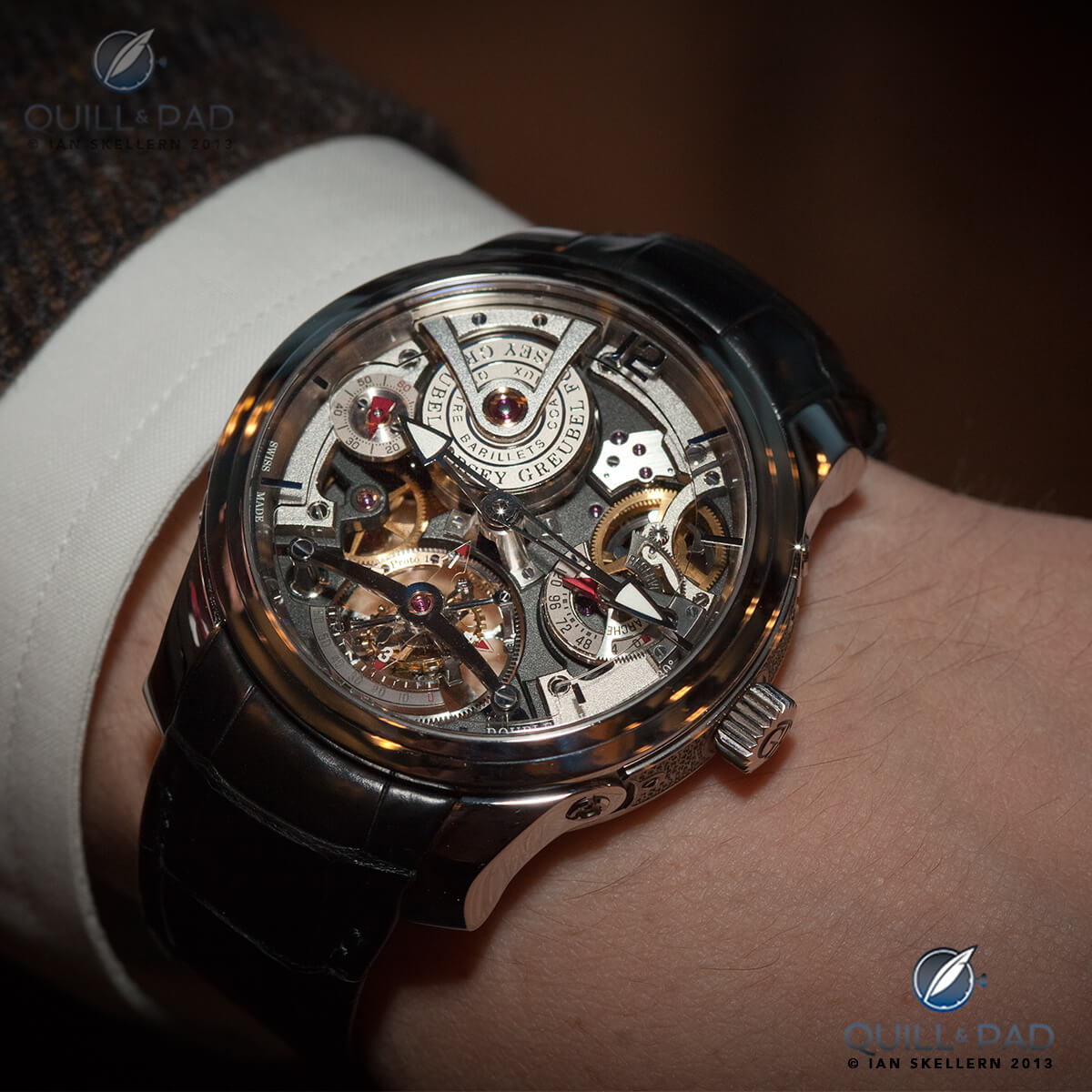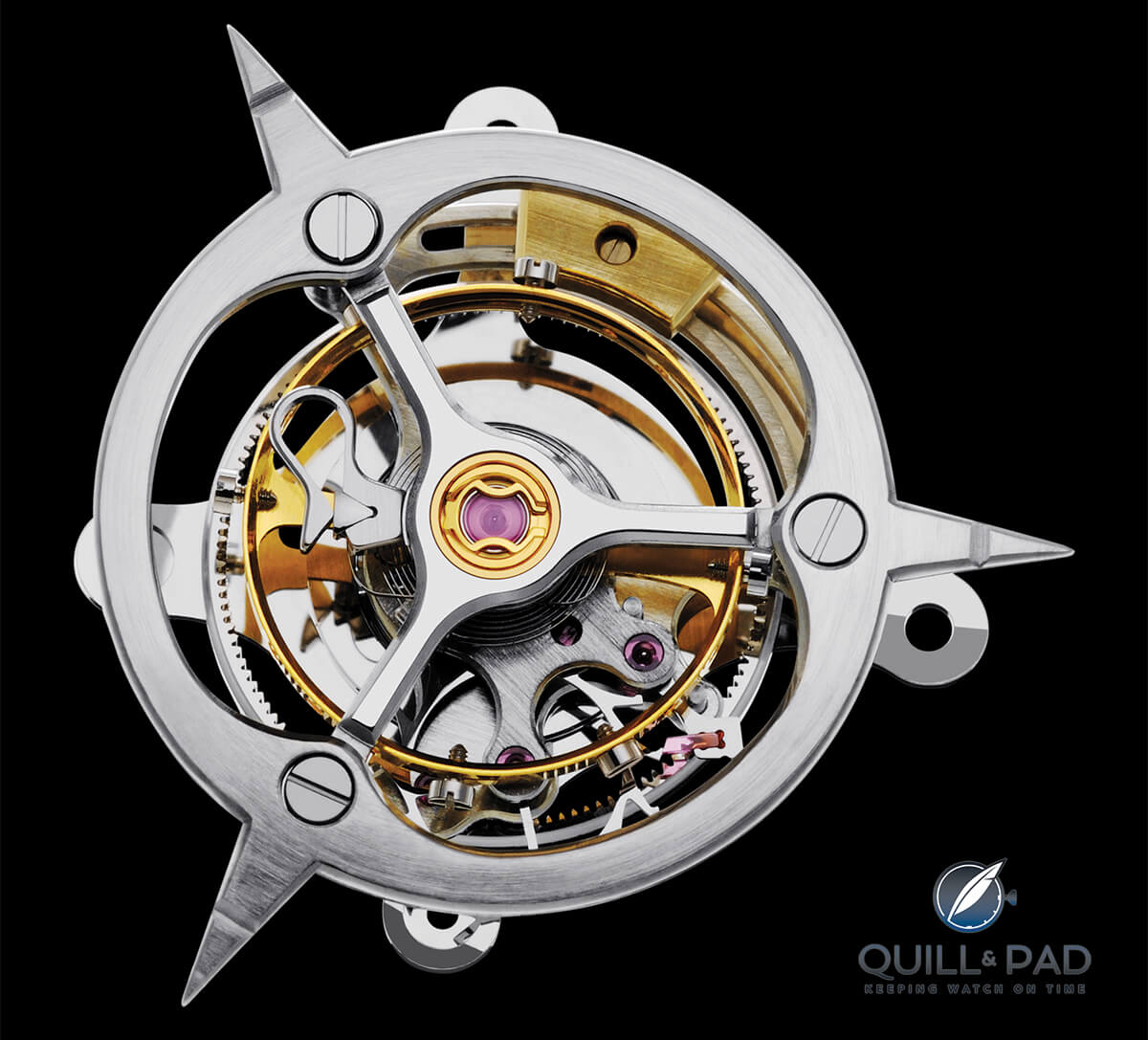by John Keil
One thing that blows my mind each and every time I think of it is the remarkable accuracy of mechanical wristwatches.
Internally, I shake my head a bit when I hear someone complain that his or her watch is off by a few seconds per day.
I know some of you are thinking, “Well, I paid thousands of dollars, I expect it to be dead accurate.” And while I understand that train of thought, try digesting this information and see if I can convince you to be a little bit less critical.

Greubel Forsey Double Tourbillon Technique: an exceedingly accurate independently certified wristwatch
The rate of a mechanical wristwatch is measured in Hz (hertz). One Hz is equal to two vibrations or one full oscillation per second. An oscillation is one turn of the balance wheel in one direction and then back in the other.
This being easy enough to understand, the majority of today’s mechanical wristwatches function at 4 Hz or 28,800 vph (vph = vibrations per hour, sometimes called bph for beats per hour).
Let’s put that into perspective: 28,800 vph x 24 hours = 691,200 complete oscillations per day.

Central three-minute tourbillon of Inversion Principle by Fonderie 47
The current standard tolerance for a C.O.S.C.-certified chronometer wristwatch is +6 / -4 seconds per day. A six-second interval contains 48 vibrations. The C.O.S.C. (Contrôle Officiel Suisse des Chronomètres) is the official institute in Switzerland for testing the precision of wristwatches.
This means that, in the worst case, if a chronometer-certified watch is off by six seconds in a day, that’s six out of 86,400 seconds in a day (24 hours x 60 minutes x 60 seconds).
Therefore, a C.O.S.C.-certified chronometer is 99.9930556 percent accurate at its worst!
And just imagine this, too: many of these incredible machines were designed and created more than a century or two ago without the aid of computers and modern technology.
Trackbacks & Pingbacks
-
[…] on the winder for an extended amount of time has lost (or gained) time. Well, this quick editorial over at Quill & Pad gives you another way of thinking about how accurate a COSC watch really is. Sure, it’s not […]
Leave a Reply
Want to join the discussion?Feel free to contribute!





















































How much for this.?
You can find out more about the Greubel Forsey Double Tourbillon Technique here: http://quillandpad.com/2014/01/13/the-greubel-forsey-double-tourbillon-30-technique-whats-friction-got-to-do-got-to-do-with-it/
I agree! The skill it takes to make these pieces of kinetic art that accurate boggles my mind.
True, your phone probably is accurate to the second, but for these tiny machines of gears and levers to even approach the true time is amazing to me. And the fact that is so difficult, makes me appreciate how close they come!
I’m also amazed that it’s able to maintain the accuracy even when exposed to heat/cold. I only have a Calibre 16 movement but only loses 4-6spd and as I don’t wear it that often I don’t mind as I have to correct the time anyway when it winds down!
Wonderful choice of topic! I’ve been waiting for an article just like this.
Just one quick technical note: one vibration is actually half an oscillation. To demonstrate this, consider the below calculation, and remember that here, 1 Hz = 1 oscillation per second.
4 oscillations/s x 60 s/min x 60 min/hour = 14400 oscillations per hour.
If we multiply this by two (because there are two vibrations for every oscillation), we get the 28800 vph figure.
So, in 24 hours, for a 4 Hz watch, we actually have 691200 vibrations, and 345600 complete oscillations.
Even so, you are still absolutely right about how awe-inspiringly accurate a good mechanical watch can be!
Thanks for that correction, Kevin. That was my error and it has been corrected.
http://www.chronocentric.com/watches/accuracy.shtml